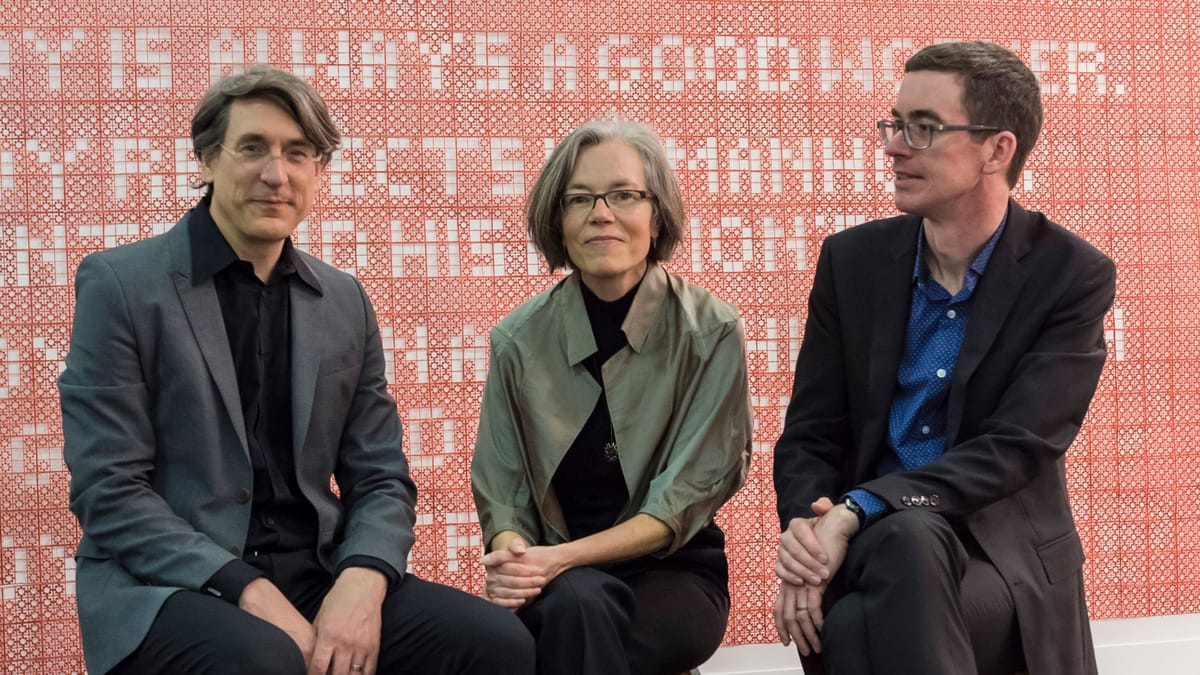"We often look to engage ideas about space and material originating in contemporary art," say BSC founders
The founders of Bade Stageberg Cox Architecture share 3 cultural items that have influenced their firm.

Interview with Tim Bade, Jane Stageberg, & Martin Cox both Founders of Bade Stageberg Cox Architecture
Led by Jane Stageberg, Tim Bade and Martin Cox, BSC Architecture is an inventive, award-winning 12-person firm with wide experience and a longstanding focus on the design of art galleries, museums and spaces for art collections.
Known for our careful attention to light and its ability to activate space, and a deep exploration of site and program, the firm has completed repeat commissions for the Armory Show and Alexander and Bonin Gallery among others. Current projects include the expansion of the Catskill Art Center, the renovation of two Greenwich Village residences and a new home for New York’s Artists’ Space.

What cultural items have impacted your lives in architecture?
Our firm is currently working on several projects that situate architecture in bucolic landscape settings – a residence in Mount Hope, NY, a summer music festival pavilion, and a meditation pavilion in the woods. These projects provide us the opportunity to explore the interface between landscape and building and the forces that each puts upon the other.

We often look to engage ideas about space and material originating in contemporary art, whether the project is set in the landscape (as in our Art Cave in Napa, California) or an urban context (such as our new project for Artists Space in NYC).

'A Line Made By Walking'
Richard Long's temporal paths in the landscape are works created by repeated acts of walking in a landscape. “A Line made by Walking, England, 1965” was the result of walking back and forth in a field while waiting for the next bus to the city to arrive. Lucy Lippard's book “Overlay” makes connections between prehistoric art and culture.
We think carefully about the long-term legacies of human interaction with any site we approach. Each site has a past, present and future that architecture can respond to in a range of ways, and we strive to keep this durational condition in mind as we consider the complex choices each context presents.

“New York Earth Room” by Walter De Maria
Walter De Maria’s “New York Earth Room” is great in so many ways. It is a 3,600 SF room on the second floor of a formerly industrial building in New York’s SoHo neighborhood that De Maria filled with 250 cubic yards earth, to a depth of 22 inches, back in 1977. We especially appreciate how the installation engages all the senses, something we think about in all our work.
One of the most surprising things is how the humid smell of the humus-rich soil instantly transports one outside New York City. The acoustics are also unusual in that the soil absorbs the white noise of the city. The much visited work was commissioned and is maintained by the DIA Foundation.

“Schunnemunk Fork”, 1991
This large-scale Richard Serra sculpture is embedded in its site, part of Storm King Art Center, a sculpture park north of New York City.
It is a reference we return to in our work. We have learned from Serra’s use of measure: his juxtaposition of the man-made steel slabs into the landscape topography strengthens the perception of both. Also resonant are Serra’s installations that use sets of steel blocks placed in different orientations to reference the human body.
